2 min read
How telepresence robots are used in healthcare
Telepresence robots are a relatively new innovation, but they have the potential to make a big impact on healthcare service delivery in remote...
10 min read
Renee Farkas
Sep 2, 2022 10:00:57 AM
The global pandemic has not only added to the already heavy workload of health care professionals worldwide, it has also created the heightened concern and very real risks of medical workers becoming infected due to direct contact with patients.
In the face of these new public health challenges, compounded by ongoing staff shortages, hospitals and primary care facilities globally have turned to technology and automated solutions to support their health care workers against viral exposure during the Covid-19 pandemic, as well as in the workplace in general. Long a science fiction feature with limited visibility in everyday life, robots are becoming commonplace in health care and continue to prove that they have an immense value in the provision of medical services.
In this article we explore how robots are being used in healthcare around the world, and highlight robot uses and opportunities in the Australian health care system.
Robotic devices are increasingly ubiquitous across medical and support facilities, with the Covid 19 pandemic occurring at a point in time where the technology was, in many cases, maturing from developmental to operational.
Historically, robots have been developed to take on dull, dirty, and dangerous jobs. These days, they are present across the health service. Singapore in particularly has embraced technological advances and now has in excess of 50 robots and telemedicine robots working in its high-tech Changi General Hospital (CGH). CNN Reports:
"From performing surgery to carrying out administrative work, robots have become an integral part of the 1,000-bed hospital's workforce," says Selina Seah, director for the Centre for Healthcare Assistive and Robotics Technology (CHART), which works with CGH to find high-tech solutions for problems in healthcare.
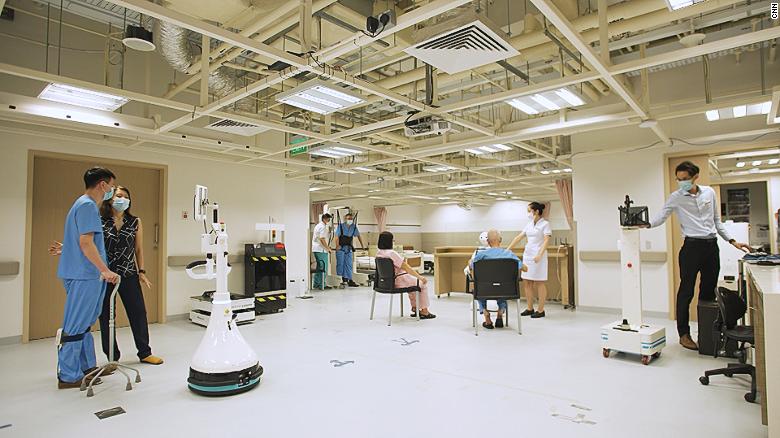
The term "robots" encompasses a wide range basically any automated computer system designed to optimize labour-intensive, high-throughput operations, applying artificial intelligence algorithms, human programmed or selected instructions, or guided (driven) directly by human input.
The application's in hospitals are therefore pretty much endless, doing everything from repetitive analytical tasks in medical analytical laboratories, through to high end human-robot interaction robots applying telerobotics for precision surgery, such as the da Vinci Surgical Robot, collaborative robots or "cobots", and telerobotic telepresence technology which enables doctors to meet patients virtually and provide telehealth services. Robots in health care can be considered based on the level of human input required:
Teleoperated robots require a human to remotely control each movement. In health care, these include remotely operated telemanipulated surgical robots, as well as drivable telepresence and telehealth robots which typically contain a display (integrated or separate phone or tablet) mounted on a roaming base. Fixed based mobile manipulators to perform tasks such as lifting and movement are also teleoperated.
Supervisory robots require a human to specify general moves or position changes and the machine decides specific movements of its actuators. These might include service robots designed to make food or linen deliveries within a hospital, or exoskeletal robots for strengthening and rehabilitation.
The operator specifies only the task and the robot manages itself to complete it. Artificial intelligence equipped cleaning and disinfection robots with mapping capabilities and obstacle avoidance are examples.
Autonomous robots create and complete all its tasks without human interaction. Advanced artificial intelligence robots, such as 'Grace' the robot nurse are examples.
We've done a round up of news articles to explore how robots are being used routinely in hospitals in 2022, and how this has been influence and accelerated by the challenges posed by the Covid 19 pandemic. Adoption of telemedicine robots, service robots and cleaning robots in public health services have all been boosted in recent years, whilst uptake of assistive robots and social/therapeutic robots also continues to grow.
Service robots have found a particular niche in many hospitals during the Covid 19 pandemic, where they are applied to undertake customer-oriented tasks such deploy supply food, drugs, beverages, and laundry. Sawai Man Singh (SMS) Government Hospital (India) has been using automated service robots to deliver food and medicines to Covid 19 patients.
In China, robots performing service task are no longer a novelty. A significant shortage of health care workers has driven demand for assistive technologies to reduce the burden on and danger to staff. Patrol robots monitor people’s temperatures within hospitals and disinfection robots sanitise isolation wards.
Similarly, multipurpose robots are being used in Rwandan hospitals, donated by the United National Development Program to assist with temperature screening, monitoring, telehealth services and record keeping during the Covid-19 pandemic.
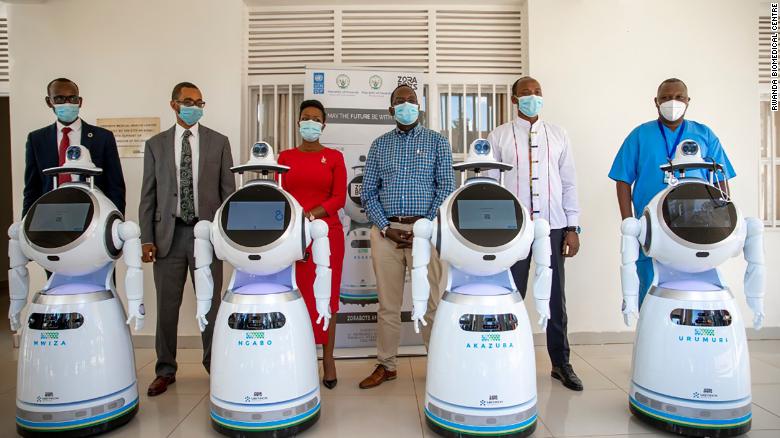
In Australia, service robots are still a bit of a novelty. Robot waiters in deployed in cafés remain newsworthy, and attract a crowd of onlookers. However as the technology becomes cheaper and more commonplace, and with the ongoing shortage of workers across many industries, we can expect to see these robots more commonly and across a far greater range of industries.
Assistive robots are being applied hospital wide for to improve the safety and health of hospital staff across their working lives. The hospital-wide applications of assistive robots are obvious wherever physical lifting is required. The obvious benefit being that there is no need for staff to compromise their own back-health in the process of assisting their patients.
Machines such as lifting machines have been used in the delivery of primary health care for as long as adjustable beds have been around, but the line between machine and robot becomes blurred as the machine / robot is designed to assist nurses and health professionals in the delivery of healthcare.
Robots company PTR has developed the Lifting Robot, intended to assist nurses particularly in the aged care setting to lift or move patients. The use of a robot, as opposed to a mini-lifting machine is intended to make the process a bit less intimidating for the patient.
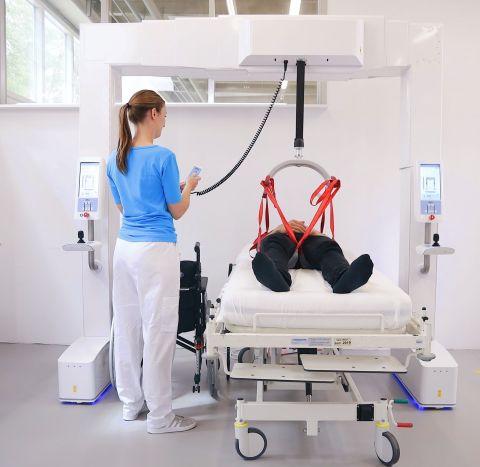
In Japanese hospitals, assistive robots are being used to move heavy beds, which can weigh up to 300 kg when carrying a patient and medical equipment. The robot reduces the initial force to start moving the bed by about 90%, meaning that just one person is required to move the heavy bed. The robots improve medical staff safety and allow doctors and nurses to focus on providing medical care.
In hospitals and nursing homes, many patients and elderly people have suffered more severely from social isolation during the Covid 19 pandemic.
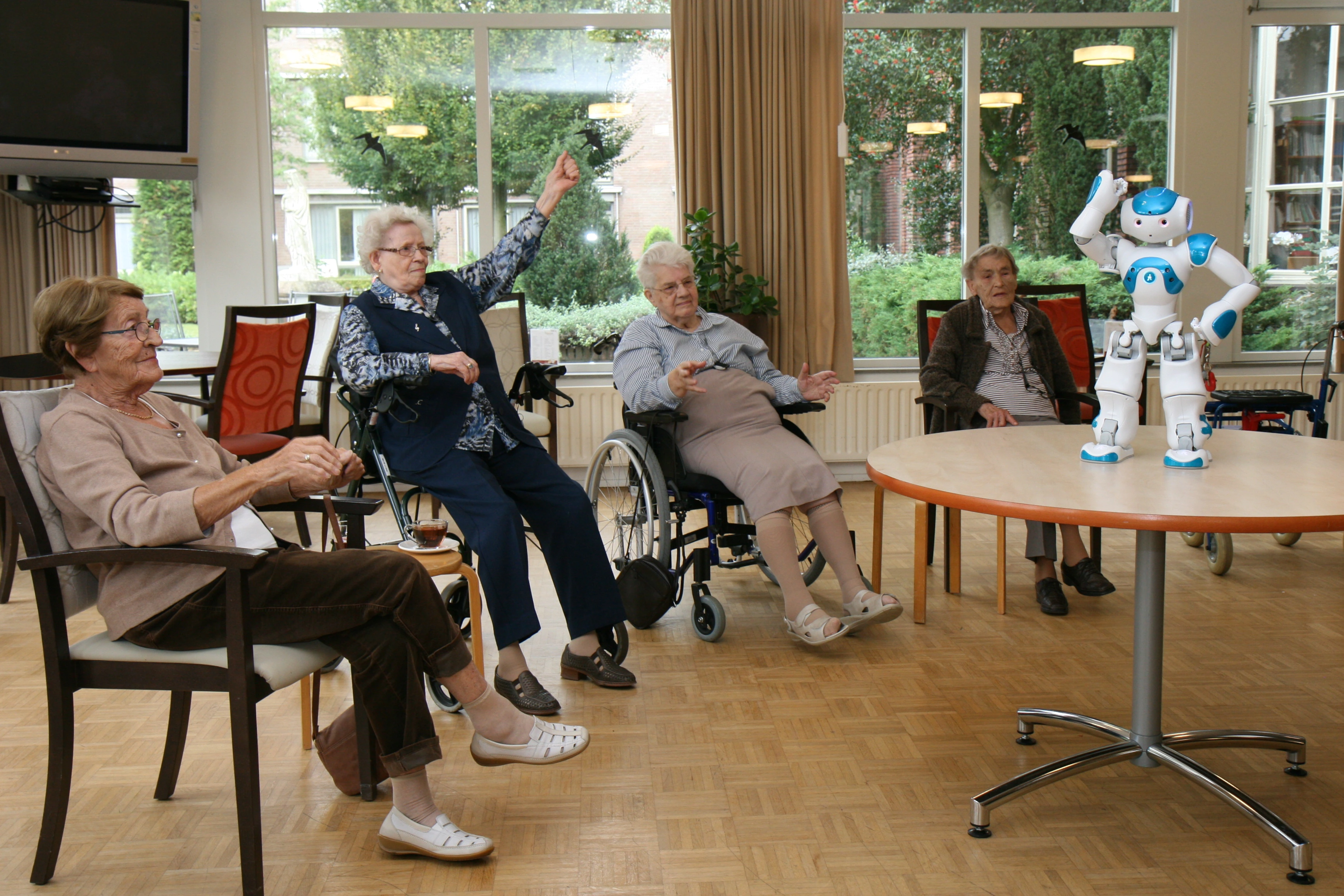
In the Netherlands, the humanoid robot 'Zora' is used in common areas to read out reads out weather forecasts and news articles, participate in exercise classes, and even directly interact with residents when programmed by staff members for what to say.
Advanced social robots are sometimes called “cobots” (collaborative robots). These can sense environmental conditions, recognize and solve problems and can work alongside people (for example, in workspaces, as hospital/surgical robots, or in retail or warehouses).
Therapeutic robots such as 'Paro' the robotic seal, have been demonstrated to calm frustrated aged care residence, with residents frequently responding better to the robot than to their human carer. Robotic companionship has been shown to be have benefits for those dealing with dementia. These Japanese designed robots are deployed in aged care facilities and hospitals globally, including in Australia.
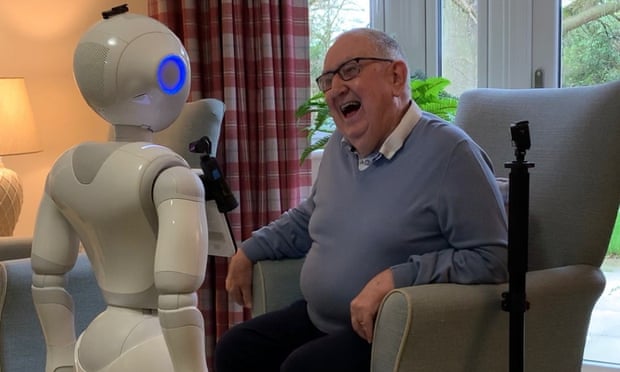
Perhaps the best known semi-humanoid robot is 'Pepper' developed by SoftBank Robotics. Pepper is a fully autonomous robot that is being used quite widely in aged care in the UK and Japan to minimise the effects of social isolation not by replacing human contact, but as a tool to help 'fill lonely periods'.
Whilst social and therapeutic robots are gaining wide acceptance for across health care, human robots take a bit more getting used to. Anthropomorphic robots are those with a body shape built to resemble the human or particular animal body in form and/or function. Great examples are the Boston Dynamics Atlas and Honda’s Asimo.
Perhaps you have seen 'Grace' in the news? Hong Kong's Awakening Health developed 'Grace' directly for the healthcare market and designed to interact with the elderly and those isolated by the COVID-19 pandemic.
"Grace recognizes emotions, converses closely to a human level within appropriate contexts, and shows perpetual empathy toward patients without becoming tired or stressed."
This a robot that can diagnose patients using artificial intelligence and lead therapy sessions. It can respond to human emotion and transfer knowledge between tasks and situations.

While society is searching for solutions to overcome unprecedented challenges, from the burnout of healthcare workers to the necessity to assist an ageing global population, humanoid robots still evoke mistrust perhaps science fiction portrayals of humanoid robots as dangerous, malicious and ready to overrule humans. It's natural for us to project these feelings onto social robots regardless of their actual safety.
Robots like Grace are intended as a support for medical professionals rather than a replacement. Adoption is hindered high cost, as well as the feeling of unease they invoke. In the near term at least, it's difficult to imagine wide adoption of robot nurses in the Australian Health system at least!
Cleaning robots, in particular vacuum and mopping robots, are common place these days. Our trusty Ecovacs Deebot robot vacuum cleans the TeleIn showroom nightly (and the homes of our staff too, if we're honest!). The technology for these artificial intelligence powered robots is mature, to the point where commercial grade robot cleaners, equipped with UV Disinfection, are becoming common place in hospitals.
In 2021, the European Commission delivered 305 disinfection robots to ease the burden on hospitals across the EU public health system as part of COVID-19 prevention. Disinfection robots provide autonomous non-chemical disinfection of hospital rooms and public spaces. Sterilising with UV light is effective, but only sterilises in the projected line of site. Disinfection robots are often further equipped with fogging capability, which creates a wet mist in the air, or electrostatic spraying, which uses an electrode that introduces a positive electric charge to the disinfectant solution, yielding extensive and creeping surface coverage, especially in hard-to-reach areas.
Surgical robots are probably the best known robots in the hospital. The pioneer da Vinci Surgical System, approved by the FDA in 2000, is now well established in hospital systems in Australia and internationally, performing tens of thousands of surgeries globally. Using advanced technology, the da Vinci Surgical System assists surgeons in performing delicate operations through tiny incisions with increased vision, precision, dexterity, and control.
In the wake of COVID-19, healthcare has had to adjust the way they operate. Doctors and other clinicians have turned to emerging technology solutions and telehealth services in order to keep up with growing demand for services and keep patients safe. The rapid adoption of telehealth services giving doctors and medical practitioners a remote presence has greatly helped to expand access to healthcare at a time when traditional in-person visits had to be avoided due to the significant increased risk to patients, healthcare providers and communities.
Telepresence based telemedicine robot devices are human controlled robots that can be navigated to a patient’s bedside by doctors working remotely, controlled remotely from a desktop, tablet or smartphone. The roving robot has video conferencing capability via a camera, screen, speakers and microphones, allowing the physician to interact with patients as if they were present in the room whilst providing telehealth services.
Senior physicians can provide overnight and training to junior and trainee doctors, without wasting valuable time traversing from one part of the hospital to another. This not only frees up the doctors’ and specialists’ time but can be ideal in a situation where someone needs to be in quarantine. Not only can staff communicate through the robot but friends and family can as well.
At TeleIn we see great opportunities for integration of telepresence robots in primary health care and aged care across the region. Applications are as broad as placing telepresence robots in the rooms of Covid 19 patients to limit infection exposure of physicians, to developing robot powered telemedicine hubs allowing general practitioners to provide services across aged care as well as rural and remote Australia, as well as improving access to specialist services which might otherwise only be available in major tertiary hospitals. Here are a couple of examples of where telepresence robots might ease pressure on our health system into the future.
While uptake of telemedicine has been boosted by necessity during the Covid 19 pandemic, the ongoing application for improved use of specialist resources in the provision of primary care in are particularly vital to public health services in a vast country like Australia. Imagine a Sydney based neurologist treating a his stroke patients via ward rounds at the Royal Prince Alfred Hospital in the morning, and then in the afternoon dialling into the telemedicine robot at remote hospitals in Cobar, Wilcannia and Bourke to provide consultations at hospitals across Western NSW Local Health District.
The same approach might allow a specialist obstetrician to provide medical oversight of a midwife performing a difficult delivery in a remote health service.
Robot powered telehealth services allowing specialist to 'be there' and interact across the public health service provide a whole new level of access in rural and remote patient care. Often these same services are provided by a nurse holding an iPad with videoconferencing enabled. This ties up a valuable worker resource, is cumbersome, provides an unsteady video feed, and allows no autonomy for the treating physician to move around at will or zoom in on things that require their attention.
Access to general practitioners is an ongoing issue in regional aged care where some residents can go many months without medical review. While the underlying causes are complex, video conferencing telepresence robots in aged care can provide a part of the solution. A telepresence robot stationed within an aged care service would allow remote visitation by city, home, or clinic based GPs, to provide telehealth services supported by nursing and allied health staff present at the facility. Costs for GPs are reduced as travel time is eliminated, and the GP can see multiple patients within a care facility at a give visitation time.
Whilst in person visits will still be required to allow medical examination, many services can be provided by video conferencing telehealth services, including repeats prescriptions, common coughs and colds; specialist referrals; pathology and radiology requests; routine chronic disease check-ups; general medical advice; and Support for residents in aged care facilities.
An added benefit of telepresence robots in aged care is their use for social visits by family members who cannot travel or live at distant locations.

Telepresence robots for private use can be used to assist older persons to 'age in place' and live in their own home for longer. Close relatives and care providers can maintain regular check-ins to make ensure the older persons in their care have not suffered a fall, stroke or other medical event.
The value of a telepresence robot in this setting is that the remote carer can dial into the robot without needing anyone to accept the call within the home. Visitations by telepresence robots may be provided at scheduled intervals, or as well as triggered by duress alarms or other on person medical monitoring devices (heart rate, movement, step count etc), with telepresence visitation triggers set up through an agreement the with person under care. When provided an access code by the client, medical practitioners may also access the telepresence robot to provide telehealth services. Similar applications are relevant for independent persons living with a disability at their own residence and in group homes.
Telepresence robots stationed stationed at primary care facilities would allow improved work practices in medical centres. General Practitioners would be provided the option to treat Covid 19 positive patients without being physically in the same room, by providing a quarantine space for patients to be visit via telepresence robot. The robots could also be used to provide supervisory oversight and support to trainee GP's, with such services able to be provided by remote specialists accessing the telepresence robot. The devices may also be used to invite specialist assessments via telehealth services on GP-managed clients within the GP's consulting rooms.
As you have now read, the applications of robots in health care and, in particular, telepresence robots across the health system, is limited only by our imaginations and drive to develop the services.
TeleIn - Telepresence Robots Australia are your local vendors for Double Robotics and GoBe Robots telepresence robots, both of which enjoy market domination in telemedicine robot devices. The robots can be purchased, leased or rented. Contact us today for a demo and pricing.
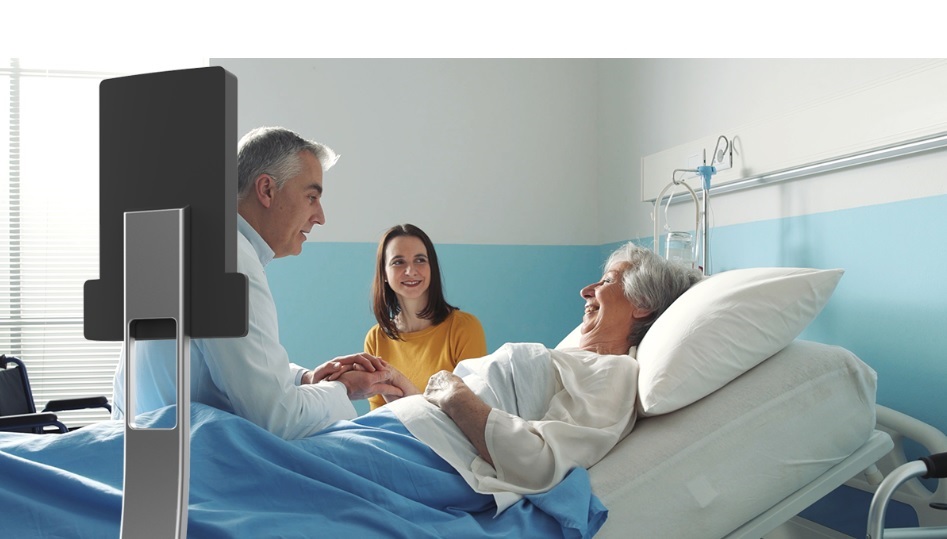
2 min read
Telepresence robots are a relatively new innovation, but they have the potential to make a big impact on healthcare service delivery in remote...

Interested in how telepresence robots can work for you, but wondering what exactly they can be used for? Join us in 'Telepresence 101', where we...
1 min read
Telepresence robots are becoming increasingly popular in various industries due to their ability to provide remote presence and enhance...